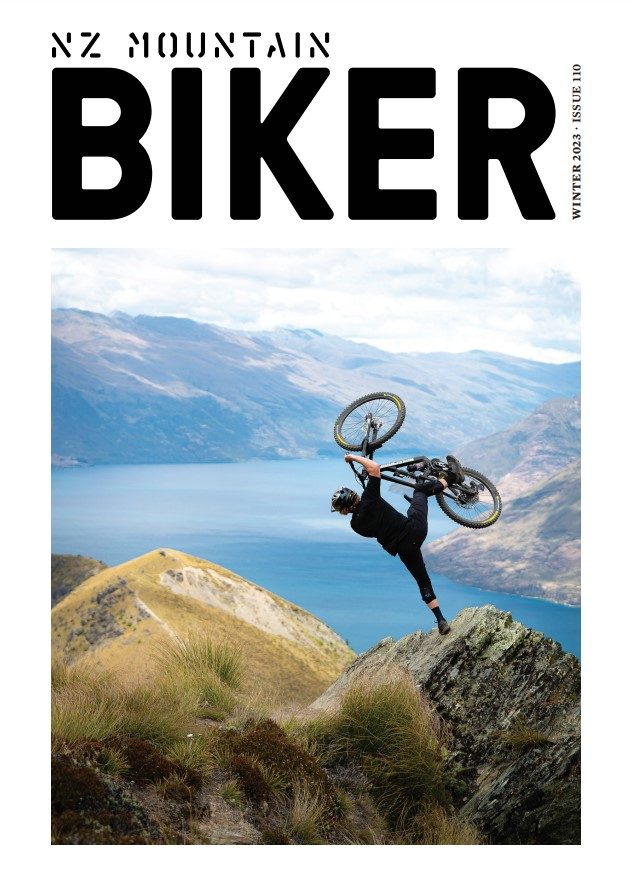WORDS: LIAM FRIARY
PHOTOGRAPHY: JAKE HOOD
DISTRIBUTOR: WORRALLS
RRP: $3,315
The mountain bike world is constantly moving forward. The sport is – and has been – defined by progression. I mean, without it, we wouldn’t be riding the bikes nor the trails we are today. SRAM’s Eagle Transmission takes the term ‘progression’ to a whole new level. I think the real standout thing about this product is a statement from SRAM’s PR homie, Chris Mandell, who said, “we (SRAM) didn’t have to change the hanger, but we wanted to have better, more precise, accurate and robust shifting”. And so, several years back, the development started.
Sometimes progression is misguided and, as we know, there’s a heap of new products with a ton of claims that don’t really seem to add any value. However, getting rid of the derailleur hanger with the new Eagle Transmission groupset, and solving adjustment issues, has value. The evolution hasn’t relented in the past two decades and, it’s fair to say, most parts and components have been overhauled, making them lighter, efficient and more robust. The drivetrain and, especially, the rear derailleurs and corresponding cassettes have undergone significant improvements, offering huge gear ranges and fast, reliable shifting. So, as the key player between the derailleur and frame it’s fair to say the derailleur hanger has seen some development – but it’s been lagging. Especially when you consider the wide range gears of modern derailleurs. Also, nearly every bike brand uses their own hanger design, which sometimes requires adjustment of the rear derailleur. This can often mean messing around with the upper and lower stops, or the B screw, because if the rear derailleur isn’t shifting like it should, you need to set the distance between the upper pully and the cassette. And we haven’t even delved into the realm of dropping or knocking your derailleur hanger, which can make it bend and render it bloody hopeless.
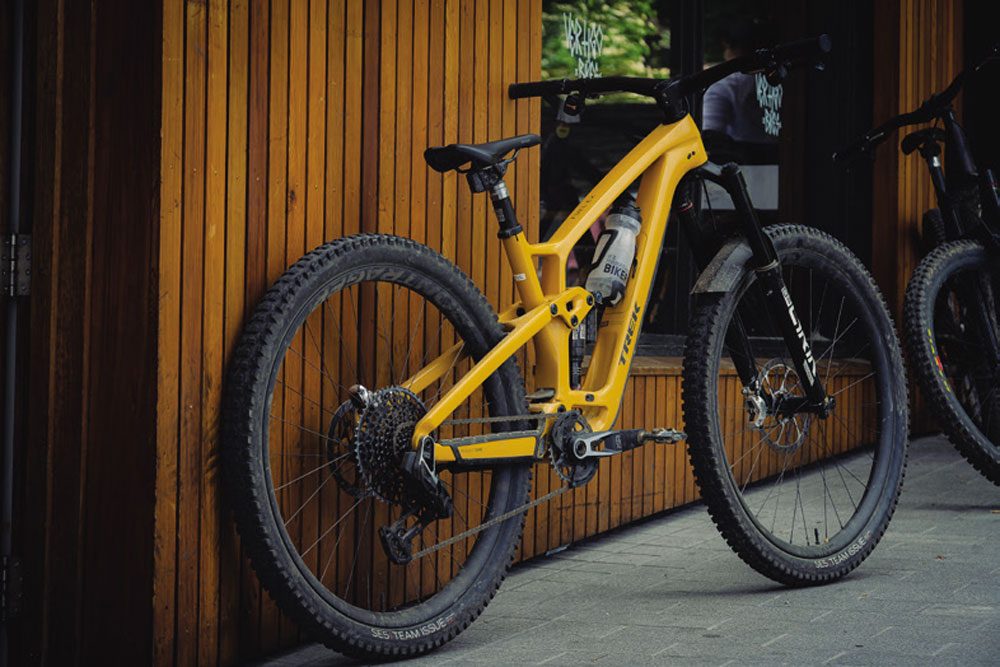
SRAM’s Eagle Transmission aims to solve all these issues by removing the hanger altogether, thanks to its hangerless interface. The Eagle Transmission derailleur mounts directly to the thru-axle, however, it’s not all that simple to get this transmission on your bike. You will need to have a UDH derailleur hanger. Now, I’m not here to write an essay about it, but more to give you my first impressions of riding the new groupset over the past four months. For more, check out the feature (page 40) about the SRAM ride camp, and we will aim to bring you more ongoing tests of the groupset throughout the year. In the next issue, I will go more in-depth about the new cranks, chainrings, chain, and the longevity – I will also add my take on the new SRAM Code Ultimate Stealth brakes.
Late last year, I was contacted by Chris Mandell (SRAM PR) to get a UDH bike ready for his upcoming visit to Aotearoa. I scrambled around and managed to wrangle a media Trek Fuel EX bike, which we fitted out with SRAM Eagle Transmission XO groupset.
My initial riding impressions of the Eagle Transmission, was that it shifts more efficiently and has a mechanical shift feel. Let me elaborate on those points in a reverse order.
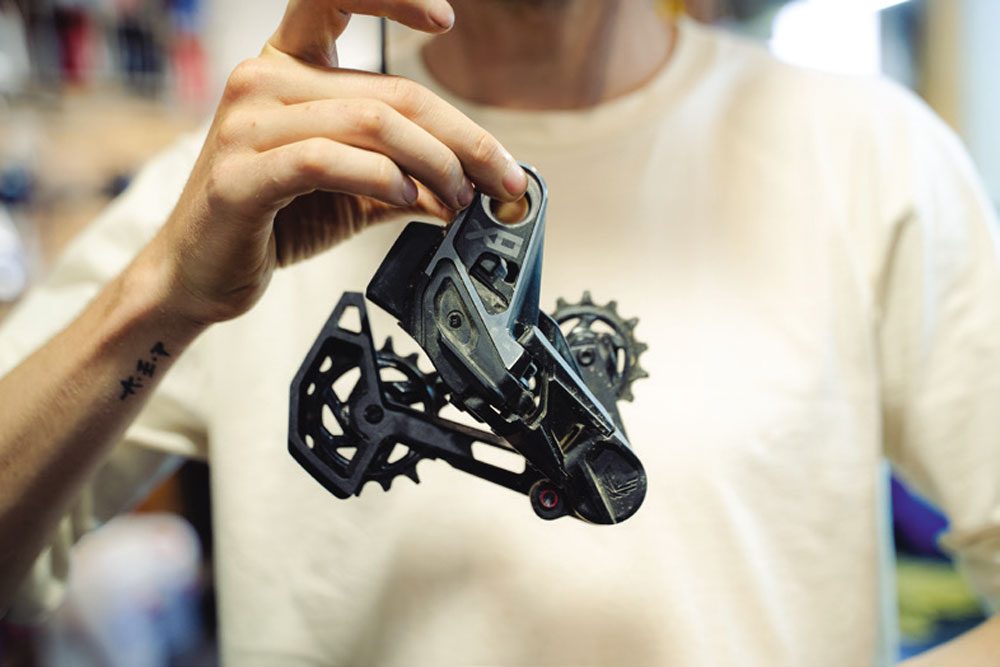
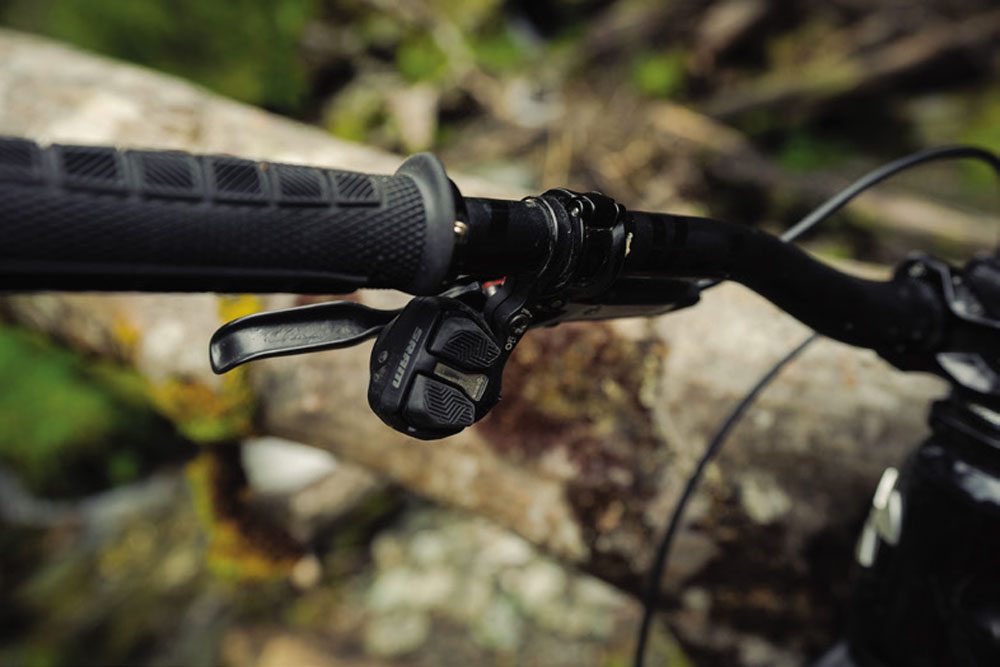
The Eagle Transmission groupsets have new controllers, now called ‘Pods’. There are two models – Standard Pod and Ultimate Pod. They both look similar, but you can change the rubberised button caps on the Ultimate Pods and adjust the ergonomics of the buttons. Also, there are two clamps for mounting the Pod. The standard clamp connects the Pod to the brake. You can move the Pod in and out to a certain extent, moving it towards or away from your hand, as well as rotating the horizontal axis. Alternatively, you can make use of the so-called Infinity Clamp, which is a separate handlebar clamp. You can rotate this in almost any position and attach it in every conceivable way. Here too, the Pod can be rotated infinitely around its own horizontal axis. The whole thing tightens up with a single Torx T25 bolt. Additionally, on the inside of the Pod, you’ll find a button for the MicroAdjust function, which allows you to fine-tune the derailleur, shifting it inwards or outwards in 14 increments. You can still adjust the assignment of the buttons using the SRAM AXS app, or use the traditional AXS controllers if you don’t get along with the new Pods.
The shifting on the new AXS Pods is different when compared to the previous generation of AXS controllers – its more defined, and firmer. They give better feedback and have a definite click. This is thanks to rubberised caps and the different ergonomics options – it’s much clearer about which button you’re pressing. This became evident when getting rowdy through a tough technical rock section. The more I have used these Pods, the more I like them – and this became more noticeable when switching back to the previous generation of AXS controllers. They just make more sense in terms of the ergonomic perspective.
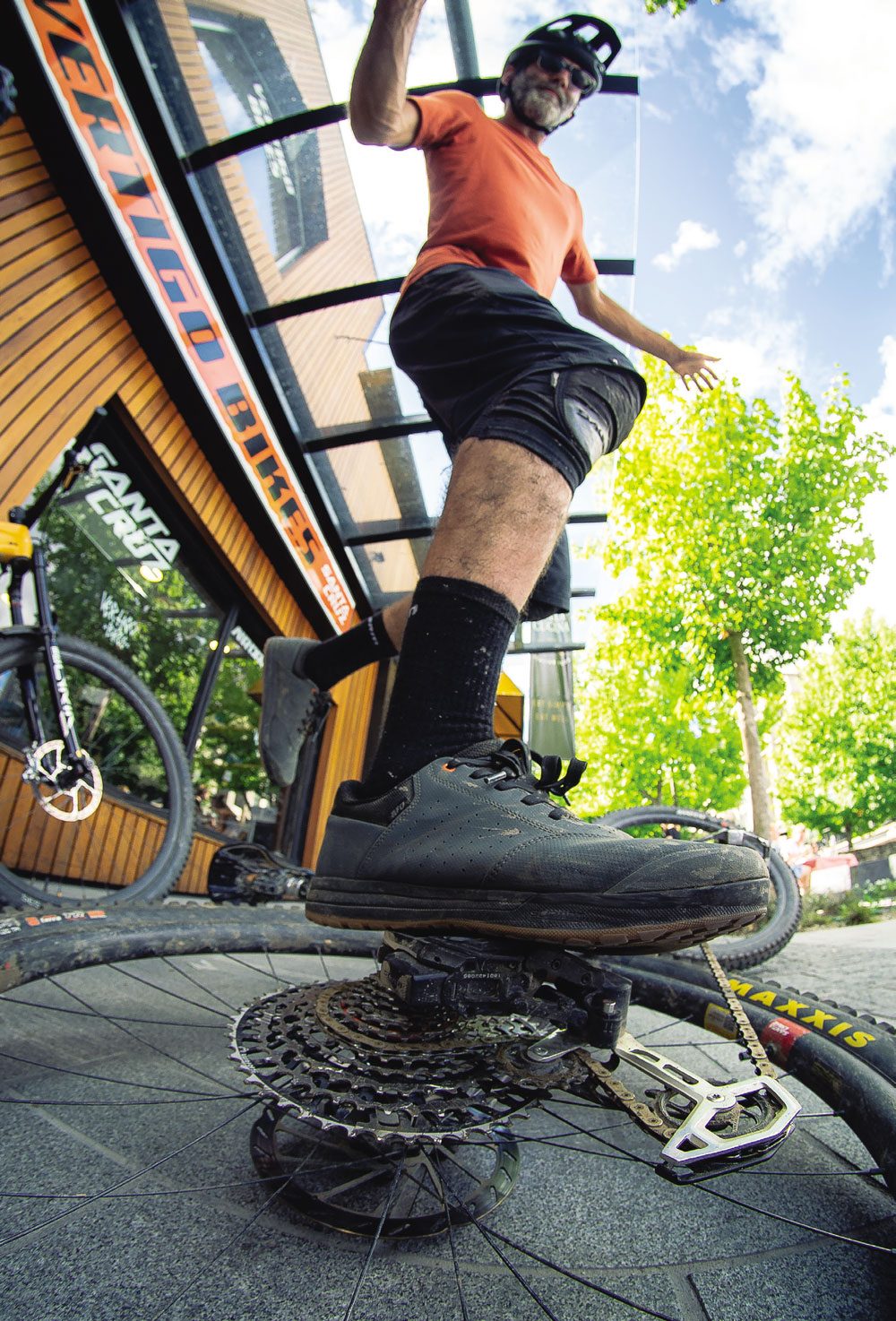
Let’s move onto the shifting. Out the gate, the functionality of the Eagle Transmission groupset is a very clean shifting process, however, there’s a slight lag when compared to conventional shifting. There’s a reason behind this: the chain of the new transmission will only shift once it has reached the perfect point on the cassette. So, when you press the button on the Pod, it doesn’t necessarily make the rear derailleur move immediately. This does depend on your gear choice and your cadence when shifting. But we’re talking fractions of a second and it’s barely noticeable after you’ve ridden it for half an hour – now I don’t even notice it. The flip side to this, is that it allows you to shift unhindered, and keep pedaling at full throttle.
Out with the old ways and in with the new era – you no longer need to back off the pedals every time you’re shifting. This is quite a big change and it’s supreme in practice. Also, this is super- convenient and promises to massively increase the longevity of your drivetrain – especially on an XC bike or eMTB. Sometimes, when shifting more than one gear, it feels like the derailleur delays the process ever so slightly – so you think you’re done and then it shifts into another gear. The reason behind this, is to maintain its precision and keep the chain engaged with a maximum of two cogs at once. You can delete that knocking noise and associated vibrations you get from conventional derailleurs when shifting under load.
The groupset has been flawless. During the four months I’ve tested it for, it’s been smooth and quiet all that time. That’s no joke – I’ve travelled with the bike up and down the country in cardboard boxes and it’s been on and off my rig a ton, and that’s before I even mention the relentless riding. I think I noticed the biggest change when I went back to continental shifting – it becomes apparent that you need to back off the pedals to shift. For me, the shifting under load is massive gamechanger. After a while you unlearn the old ways of shifting, and this shifting becomes intuitive.
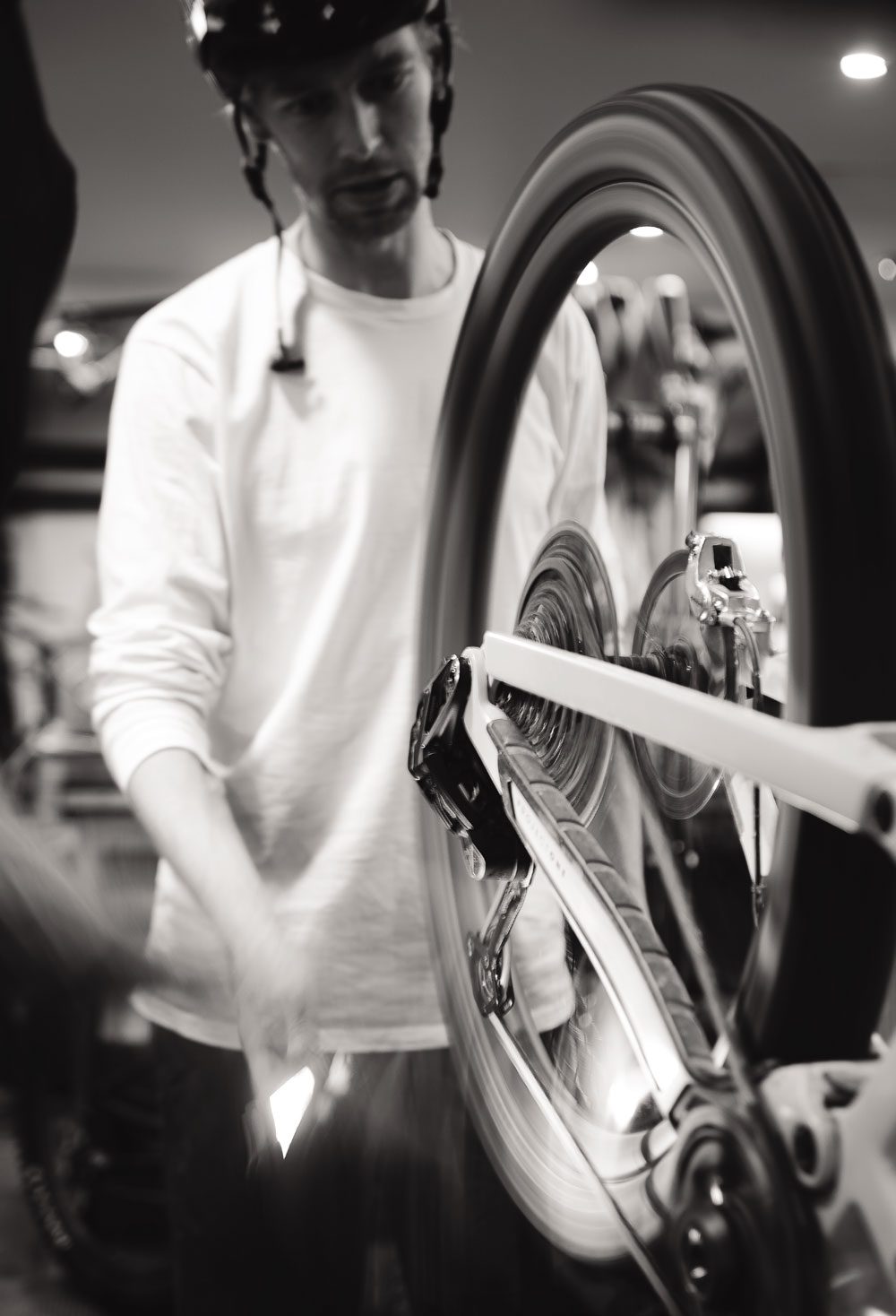
I was clearly lying earlier, as this is now becoming an essay – so let me bring it to a close with some final words about robustness. During the test period I didn’t manage to rip off any of the rear derailleur, and would bet it’s near impossible to do so. I bashed the derailleur around and it has come away unscathed, apart from a few cosmetic scratches. It rides unfazed about any disturbance, even when directly stood on – Chris did this during one of the ride camp days and showed us that even when it’s stood on you can pick it up and ride off without any drama whatsoever. I have shown a few friends this trick over the test period and it impressed them, but what was more impressive was that I could get back aboard my bike and change gears. This derailleur is bloody tough and performs incredibly well.
SRAM have done well at removing the parts off the trail that are annoying – like adjustment requirements – and delivered on impeccable, reliable and robust shifting. Yes, the price is damn high, but given the innovation, quality and precision, you’re not going to be disappointed.
